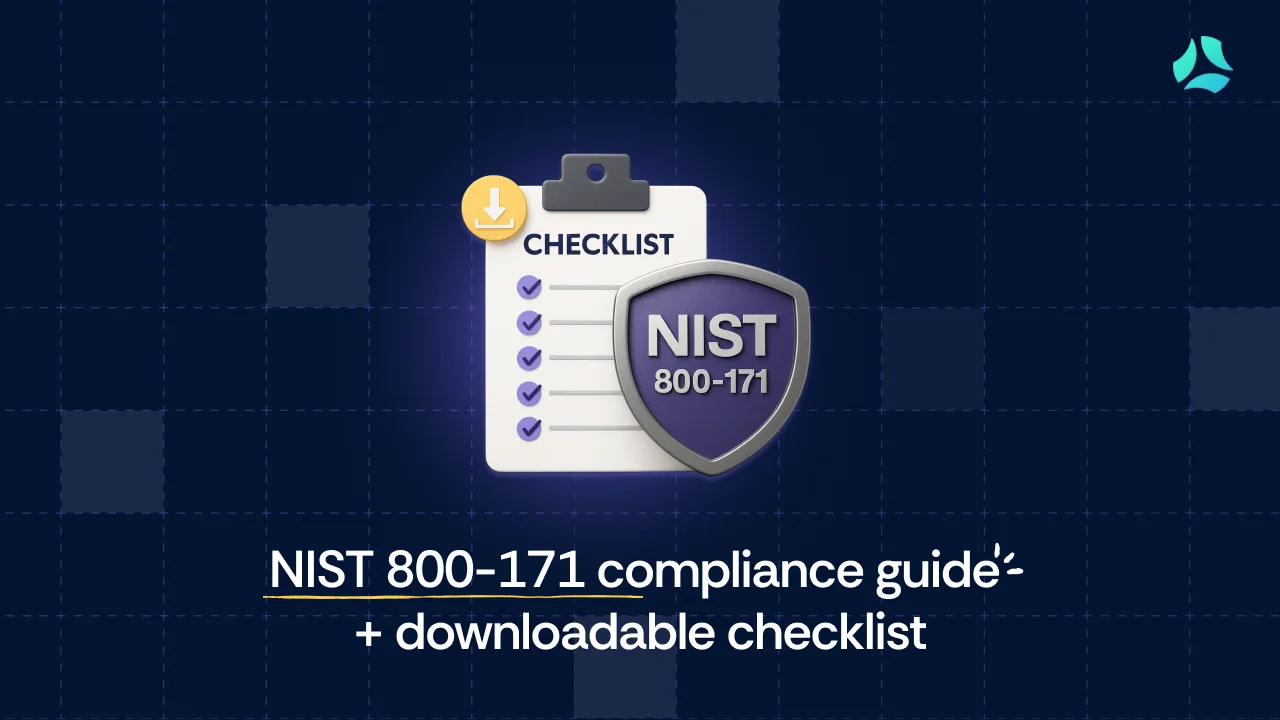Quantitative Risk Analysis: Uncovering Invisible Menaces

In an era defined by rapid technological advancements, global interconnectivity, and unprecedented volatility, the art and science of risk management have taken on an entirely new level of significance. Every day, individuals, businesses, and organizations are exposed to a wide array of risks, both seen and unseen, that can profoundly impact their operations, finances, and future prospects.
While risk assessment is a crucial initial step in the risk management process, there exists a deeper and more intricate layer that often goes unnoticed—the quantification of risks.
Risk quantification goes beyond qualitative assessments and provides a quantitative perspective, enabling organizations to make informed decisions about risk mitigation strategies and resource allocation.
The blog aims to highlight the importance of quantifying risk in cybersecurity, explaining its significance in uncovering hidden threats, understanding its methodologies, and helping readers enhance their cybersecurity defenses.
What is risk quantification?
Risk quantification in cybersecurity is the process of systematically assessing and measuring the potential risks and vulnerabilities that an organization faces in its digital environment. This involves assigning quantitative values to various aspects of cybersecurity, such as the likelihood of a security breach, the potential impact of an incident, and the cost associated with mitigating risks.
It also involves quantifying reputational risks, meaning quantifying the potential harm that can be inflicted on an organization’s reputation due to adverse events or negative publicity, including those related to cybersecurity breaches.
What is the need for a quantitative approach to assess cybersecurity risks?

A quantitative approach to assessing cybersecurity risks is essential for several compelling reasons:
1. Precision and clarity
Quantitative methods provide precise measurements and numeric values to assess risks. This clarity helps organizations understand the magnitude of each risk, making it easier to prioritize and allocate resources efficiently.
2. Risk prioritization
Quantitative assessment allows for the prioritization of cybersecurity risks based on their potential impact and likelihood. High-priority risks can be addressed first, reducing the organization’s exposure to the most significant threats.
3. Resource allocation
By quantifying risks, organizations can allocate their resources more effectively. They can allocate budgets and manpower to areas where they will have the most significant impact on risk reduction.
4. Cost-benefit analysis
A quantitative approach enables organizations to conduct cost-benefit analyses. This means they can compare the cost of implementing security measures with the potential cost of a cybersecurity incident, helping them make informed investment decisions.
5. Data-driven decision-making
Quantitative risk assessments rely on data and metrics, allowing for data-driven decision-making. This approach is more objective and less reliant on subjective judgments, reducing biases and improving the accuracy of risk assessments.
6. Continuous improvement
Quantitative assessments can be regularly updated with new data and evolving threat landscapes. This adaptability enables organizations to continuously improve their cybersecurity posture and stay resilient against emerging threats.
7. Communication
Quantitative data provides a common language for communicating cybersecurity risks within an organization and to external stakeholders. This enhances communication and collaboration among different departments and with partners, regulators, and insurers.
8. Compliance and reporting
Many regulatory frameworks and industry standards require organizations to demonstrate a quantitative understanding of their cybersecurity risks. A quantitative approach helps meet compliance requirements and facilitates reporting to regulatory authorities.
What is included in the process of quantifying risks?

Risk quantification is a structured process within cybersecurity risk management that involves assessing and measuring the potential risks an organization faces in its digital environment. Here’s an overview of the process:
Step 1: Risk identification
The first step is to identify all potential cybersecurity risks and vulnerabilities. This includes considering various aspects such as the organization’s assets, threats, vulnerabilities, and potential consequences of security incidents.
Step 2: Data collection
Gather relevant data and information about the identified risks. This data may include historical cybersecurity incidents, system configurations, threat intelligence, and business impact assessments.
Step 3: Risk assessment
Quantify the risks by assessing their likelihood and potential impact. Likelihood refers to the probability of a risk event occurring, while impact measures the extent of the harm or damage it can cause. These assessments are typically assigned numerical values.
Step 4: Risk analysis
Perform a quantitative analysis that combines the likelihood and impact assessments to calculate a risk score or rating. Various mathematical models for quantifying risks and other frameworks can be used for this purpose.
Step 5: Data modeling
Create mathematical models or algorithms to represent the relationships between different risk factors. These models may consider factors like vulnerabilities, threat vectors, and control effectiveness to provide a more accurate risk assessment.
Step 6: Risk prioritization
Prioritize risks based on their risk scores. High-priority risks, which have the potential for significant impact and high likelihood, should be addressed with urgency.
Step 7: Risk mitigation planning
Develop risk mitigation strategies and action plans for the identified high-priority risks. This may involve implementing security controls, enhancing monitoring, or investing in cybersecurity solutions.
Step 8: Resource allocation
Allocate resources, including budget and personnel, to implement the risk mitigation plans effectively. This step ensures that the organization focuses on addressing the most critical risks.
Step 9: Monitoring and review
Continuously monitor the effectiveness of the risk mitigation measures and review the quantifying risk process regularly. Cybersecurity risks evolve, so it’s essential to adapt to changing threat landscapes.
Step 10: Documentation and reporting
Document the entire quantifying risk process, including the identified risks, assessments, and mitigation plans. This documentation is critical for compliance, reporting, and internal communication.
Step 11: Communication
Share the results of quantifying risk with relevant stakeholders, including executives, IT teams, and business units. Effective communication ensures that everyone is aware of the organization’s cybersecurity risks and mitigation efforts.
Step 12: Continuous improvement
Use the insights gained from the quantifying risk process to improve cybersecurity measures and strategies continuously. Regularly update risk assessments as new data and threats emerge.
Importance of data collection in quantitative risk assessment
Quantifying cyber risks involves the use of various methods and tools to assess and measure potential threats accurately. You can read more about the methods used in quantitative cyber risk assessment in our blog here.
Data collection and analysis are fundamental to quantifying cyber risks, and their importance spans critical areas of cybersecurity risk management. Accurate risk assessment relies on reliable data, encompassing an organization’s assets, vulnerabilities, threats, and historical incidents. Without robust data, risk assessments may lead to inaccurate decisions.
Comprehensive data collection uncovers hidden threats through historical data and threat analysis, aiding in the identification of unnoticed risks. Data analysis helps prioritize risks by evaluating their likelihood and impact, ensuring resource allocation targets the most critical vulnerabilities, and reducing overall risk exposure.
Informed decision-making is facilitated by data-driven insights, guiding effective cybersecurity measures. Continual data updates and reviews ensure organizations stay informed about evolving threats, enabling ongoing cybersecurity enhancement.
Data collection and analysis are essential for compliance and reporting, fulfilling regulatory requirements. Data also serves as a common language for communication within an organization, fostering collaboration in addressing security concerns.
Analyzing data post-implementation validates the effectiveness of security controls, ensuring that chosen strategies work as intended.
In summary, data collection and analysis are integral to accurate risk assessment, proactive threat detection, informed decision-making, compliance, and validation of security measures. Prioritizing these practices is vital for effective cybersecurity risk management.
What are the benefits of quantifying risk?

Risk quantification offers numerous advantages in cybersecurity risk management:
- Precision: Risk quantification provides precise and numeric measurements of cybersecurity risks, enhancing accuracy in risk assessment.
- Prioritization: It helps prioritize risks based on their potential impact and likelihood, enabling organizations to allocate resources effectively.
- Resource allocation: Organizations can allocate budget and personnel more efficiently by focusing on high-priority risks identified through quantification.
- Cost-benefit analysis: Risk quantification enables cost-benefit analysis, aiding in evaluating the ROI of risk mitigation strategies.
- Data-driven decision-making: It supports data-driven decision-making by providing objective information and reducing reliance on subjective judgments.
- Early warning signs: Quantified risk assessments often include Key Risk Indicators (KRIs), serving as early warning signs of potential threats.
- Compliance: Facilitates compliance with regulatory requirements that mandate a quantitative understanding of cybersecurity risks.
- Continuous improvement: Allows organizations to update and refine risk assessments as threats evolve, enhancing their cybersecurity posture.
- Communication: Quantitative data provides a common language for communicating cybersecurity risks, and improving collaboration.
- Insurance and risk transfer: Assists in determining appropriate insurance coverage by quantifying potential financial losses from cyber incidents.
- Mitigation effectiveness: Organizations can assess the effectiveness of security controls by quantifying risks before and after mitigation.
- Business alignment: Aligns cybersecurity risk management with broader business goals, demonstrating the value of security investments.
- Scenario analysis: Enables modeling of various risk scenarios and their potential impacts, aiding in preparedness and response planning.
- Demonstrating ROI: Helps organizations justify cybersecurity investments by quantifying the return on investment in risk reduction.
- Vendor risk management: Used in vendor risk management to evaluate third-party cybersecurity risks.
Best practices for implementing quantifying risk

Risk quantification is a crucial aspect of risk management, especially in the context of cybersecurity. Here are the best practices for implementing risk quantification:
1. Comprehensive risk profiles
Create comprehensive risk profiles that encompass all potential threats and vulnerabilities relevant to your organization’s operations. This involves identifying and categorizing risks to ensure a comprehensive understanding of your risk landscape.
2. Objective risk assessment
Build an objective list of cybersecurity risks based on data and analysis. Avoid subjective assessments and instead rely on quantifiable metrics and evidence to evaluate risks accurately.
3. Communication
Effective communication of risks is essential. Ensure that risk information is communicated clearly and regularly throughout the organization. This fosters awareness and informed decision-making.
4. Prioritization
Prioritize risks by assigning criticality ratings. Not all risks are equal in terms of their potential impact on your organization. Focus on addressing high-priority risks first to allocate resources effectively.
5. Cybersecurity context
Align your cybersecurity efforts within the context of cyber risk quantification (CRQ). Ensure that your risk quantification efforts are integrated into your overall cybersecurity strategy.
Final words
In conclusion, as technology evolves, cybersecurity risks grow more complex. Risk quantification is essential, providing organizations with precision, resource allocation, and data-driven decision-making. It uncovers hidden threats, offers a structured process, and aligns cybersecurity with business goals. In this ever-changing landscape, quantifying risk is crucial for safeguarding digital assets and reputation, ensuring a resilient cybersecurity strategy.
Unlock the power of proactive risk management with Scrut. Take charge of your cybersecurity strategy today! Get started for a safer tomorrow.
FAQs
1. What is quantifying risk in cybersecurity?
Risk quantification in cybersecurity is the process of systematically assessing and measuring potential cybersecurity risks and vulnerabilities in an organization’s digital environment. It involves assigning quantitative values to aspects like the likelihood of a security breach, the potential impact of an incident, and the cost of risk mitigation.
2. Why is quantifying risk important in cybersecurity?
Risk quantification is crucial because it provides organizations with quantifiable data to make informed decisions regarding cybersecurity investments, resource allocation, and risk mitigation strategies. It helps identify hidden threats, prioritize risks, allocate resources effectively, and communicate risks across departments.
3. How does quantifying risk improve cybersecurity decision-making?
Risk quantification enhances decision-making by providing objective data and metrics. It helps organizations prioritize risks, allocate resources efficiently, conduct cost-benefit analyses, and align cybersecurity efforts with overall business goals.


















